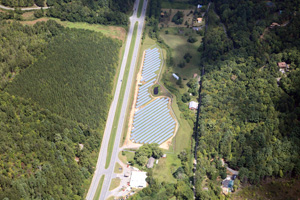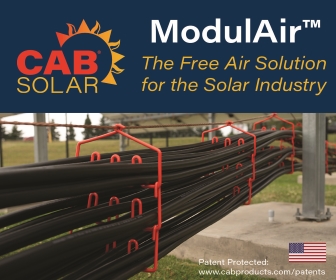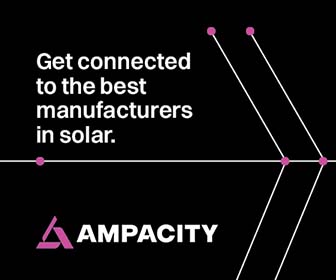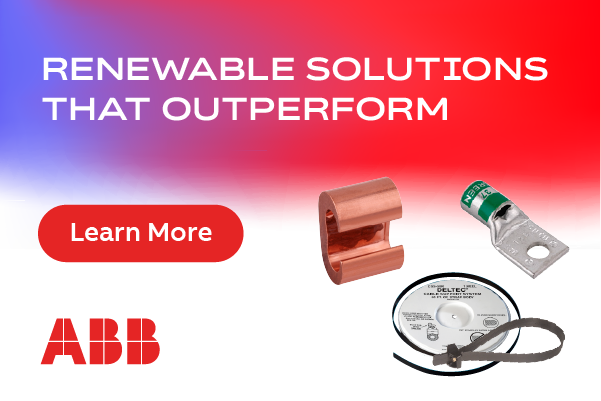Engineering Successful Solar Projects: Under unique climate & environmental conditions
 Not all solar power projects are the same. From climate conditions to a site’s landscape and terrain to certain environmental factors, each project has its own unique set of challenges and considerations. And, perhaps not surprisingly, there are various materials, equipment, and technologies that better perform under certain solar installation site conditions. Engineering counts from day one of a project’s development, and knowing which components work best—those that properly adhere to local building codes, permitting requirements, and environmental laws—are key considerations for any successful solar developer looking to expand and diversify in today’s market.
Not all solar power projects are the same. From climate conditions to a site’s landscape and terrain to certain environmental factors, each project has its own unique set of challenges and considerations. And, perhaps not surprisingly, there are various materials, equipment, and technologies that better perform under certain solar installation site conditions. Engineering counts from day one of a project’s development, and knowing which components work best—those that properly adhere to local building codes, permitting requirements, and environmental laws—are key considerations for any successful solar developer looking to expand and diversify in today’s market.
Environmental challenges
Solar developers face many challenges in the United States. Consider the following situations:
• Abnormal terrain
Sandy, mountainous, or rocky landscapes are not uncommon in the US, and can cause potential building code violations, requiring extensive clearing and grading. Solar developers must find efficient ways to deal with each project’s terrain. To mitigate risks, a complete site assessment is imperative, and must determine the proper equipment and installation methods to ensure system stability—particularly in unpredictable terrain, such as sand. In addition, once a project is complete, sand and other forms of debris can settle on solar panels and absorb crucial sunlight, requiring increased cleaning to remove unwanted residue.
Case in point: The one-megawatt (MW) Wingate installation in Murphy, North Carolina called for extensive earth moving work. The site featured a small mountain and contrasting depression, forcing developers to redistribute 26 feet of dirt. Erosion becomes a high risk when modifying the landscape; therefore, a comprehensive erosion control study was performed prior to leveling the land to ensure the site would be balanced and able to generate the optimum amount of energy.
• Water hazards
Sometimes a nearby pond or river can interfere with project grounds. For example, a natural stream runs directly through the one-megawatt Holiness, North Carolina installation site. During development, the stream complicated the overall system layout, causing unexpected environmental and engineering design concerns. However, with innovative engineering efforts, developers were able to create a uniquely shaped installation that met the environmental and energy production requirements of the site. This also allowed the site to account for the possibility of future storms and potential flooding.
• Natural habitat
The natural habitats of endangered plant and animal species are an immense concern in solar development. Comprehensive onsite environmental studies must take place to assess the potential risks construction poses to local plants and wildlife. If an endangered species or any irregular animal activity risk is discovered, a strategic plan to mitigate can be performed. Sometimes simply establishing barriers or deterrents to keep wildlife away from a project works while, at the same time, allowing nature to continue to thrive. It might be assumed that meeting environmental standards for a renewable energy project is easier than conventional construction projects due to the installation’s positive impact on the environment but the same, if not more complex, levels of laws, legal work, and strategic planning come into play.
• Land disturbances
In some designated agricultural areas, local building codes require that a PV system must be installed with the understanding that once it’s no longer in operation, it can be fully removed without affecting the lands quality prior to the installation. Proper developmental decisions must be evaluated and made to diminish land disturbance and land use impacts. This constraint requires developers to consider alternative installation methods. Fully ballasted, ground-mounted solutions and driven posts are two alternatives that are presently utilized in contrast to poured concrete footers, which can be difficult to remove. Another alternative currently under exploration is the use of metal foundations that reduce the footprint of the foundation, and are designed to be absolutely removable.
Climate considerations
Terrain, wildlife, and land considerations aren’t the only project factors to consider. In tropical locations, such Puerto Rico and the US Virgin Islands, prospective trouble sources include hurricanes (wind loads), earthquakes (seismic issues), humidity, and salt water residue. Risks must be moderated through customized material and equipment selection that guarantee an installation’s compliance with state and utility regulations—in addition to withstanding intense weather conditions.
In Florida and the South Eastern seaboard, there are high wind speed requirements that vary depending on the geographical location of the proposed project. Understanding the engineering behind the nominal wind speed parameters can be the deciding factor on whether or not a particular project is feasible. In contrast, issues such as hail and snow can be detrimental to the success of a solar array in colder climates. Various adjustments, including the tilt and angle of panels, have to be taken into account to not only avoid weather-related damage, but also to ensure insurance coverage. Understanding specific insurance requirements from the beginning helps to avoid future financial or coverage discrepancies.
Permitting process
The permitting process can be a tedious task for any installation, becoming especially difficult to maneuver in unique situations where multiple agencies and approvals are required. Although the utility company makes decisions on which substation a solar site will be connected to, many times due to location or topography, the installation site is not anywhere near the substation. If electrical lines need to be run through private or state property, or even under roadways, various approvals are needed. In such cases, construction must comply with the regulations of the Department of Transportation and the Department of Environmental Services, which can include completing necessary documents related to: water and sewer engineering, erosion control, the permitting and inspections’ office, and the Department of Parks and Recreation.
Experienced engineering
Due to the nature of some non-negotiable ecological setbacks, any resulting loss of power must be counteracted by measures such as increasing the wattage of each module, or decreasing the space between rows to allow for more panels. All location-specific issues, including wind loads and seismic concerns, require vital adjustments to the engineering and design of each individual project, which is why every project location must undergo a detailed analysis.
Working with the terrain, the climate, and the environmental considerations, rather than against them, is the only way for a solar power project to provide long-term success. Experienced engineers have the ability to design and supply a system from day one that produces maximum power and return on investment, while respecting all environmental conditions.
Brittany Szafran is a public relations assistant for ESA Renewables, a turnkey solar solutions provider. ESA provides EPC and O&M services to customers throughout the world, and has developed its own proprietary renewable energy monitoring system with a solar project guarantee.
ESA Renewables
Author: Brittany Szafran









.png?r=4384)


